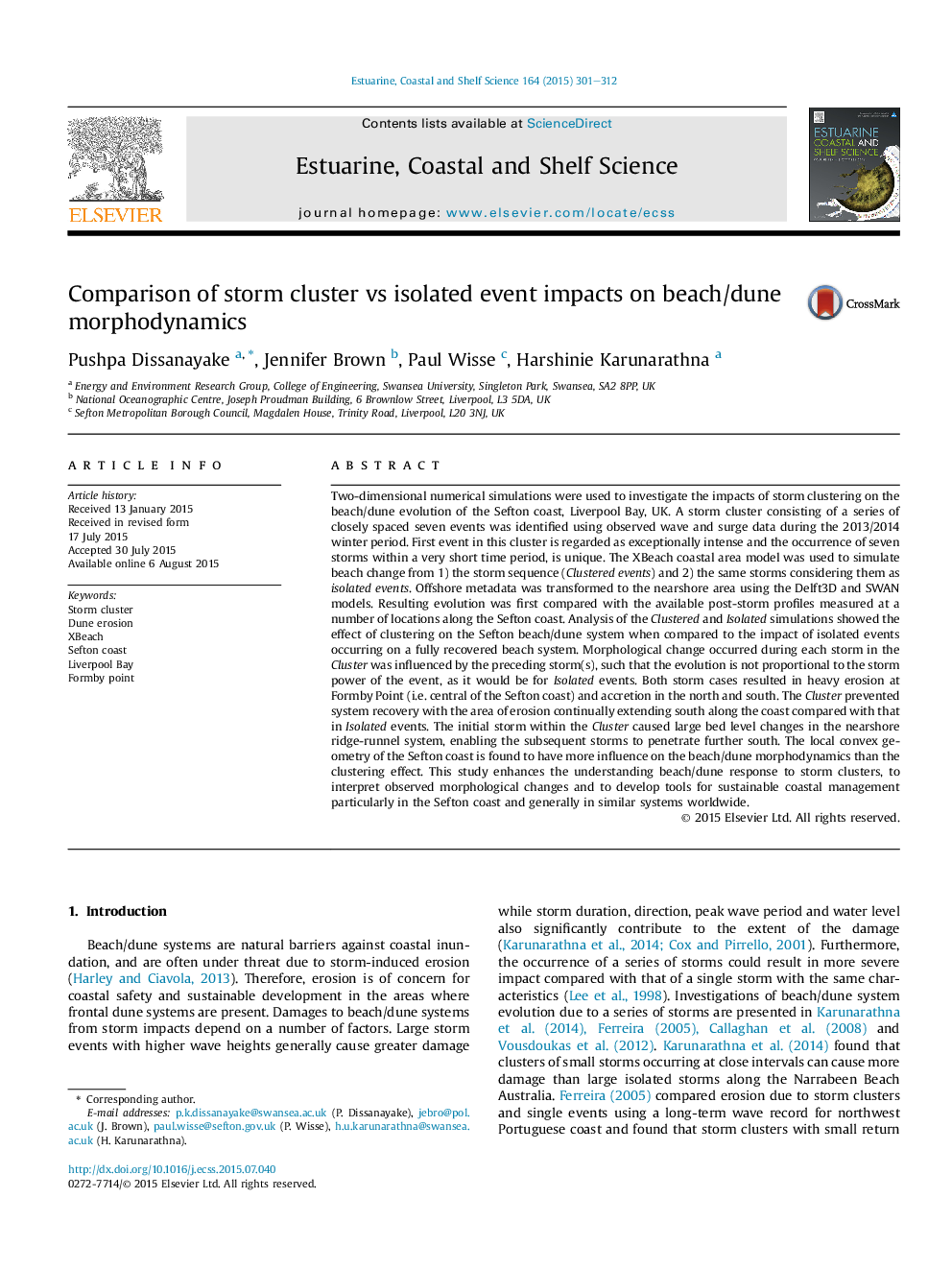| Article ID | Journal | Published Year | Pages | File Type |
|---|---|---|---|---|
| 6384714 | Estuarine, Coastal and Shelf Science | 2015 | 12 Pages |
Two-dimensional numerical simulations were used to investigate the impacts of storm clustering on the beach/dune evolution of the Sefton coast, Liverpool Bay, UK. A storm cluster consisting of a series of closely spaced seven events was identified using observed wave and surge data during the 2013/2014 winter period. First event in this cluster is regarded as exceptionally intense and the occurrence of seven storms within a very short time period, is unique. The XBeach coastal area model was used to simulate beach change from 1) the storm sequence (Clustered events) and 2) the same storms considering them as isolated events. Offshore metadata was transformed to the nearshore area using the Delft3D and SWAN models. Resulting evolution was first compared with the available post-storm profiles measured at a number of locations along the Sefton coast. Analysis of the Clustered and Isolated simulations showed the effect of clustering on the Sefton beach/dune system when compared to the impact of isolated events occurring on a fully recovered beach system. Morphological change occurred during each storm in the Cluster was influenced by the preceding storm(s), such that the evolution is not proportional to the storm power of the event, as it would be for Isolated events. Both storm cases resulted in heavy erosion at Formby Point (i.e. central of the Sefton coast) and accretion in the north and south. The Cluster prevented system recovery with the area of erosion continually extending south along the coast compared with that in Isolated events. The initial storm within the Cluster caused large bed level changes in the nearshore ridge-runnel system, enabling the subsequent storms to penetrate further south. The local convex geometry of the Sefton coast is found to have more influence on the beach/dune morphodynamics than the clustering effect. This study enhances the understanding beach/dune response to storm clusters, to interpret observed morphological changes and to develop tools for sustainable coastal management particularly in the Sefton coast and generally in similar systems worldwide.
